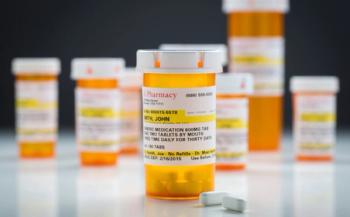
- Pharmaceutical Executive-06-01-2015
- Volume 35
- Issue 6
Bridging Industry's Charisma Chasm
Pharma’s image is still suffering despite a rise in medical innovation. Dan Bobear offers five patient-centered strategies that could help in finally mending the gap.
Pharma’s image is still suffering despite a rise in medical innovation. Dan Bobear offers five patient-centered strategies that could help in finally mending the gap.
According to the 2015 Harris Poll, the reputation of the pharmaceutical industry ranks ninth out of 15 industries. Pharma had only 37% positive mentions and was in the company of the airline industry, insurance, financial services, tobacco, and the government. Gone is the era of mass-market blockbusters; a new era of bringing highly specialized, innovative medications is upon us. These new products have the ability to not only transform lives, but also transform the reputation of the industry.
There are some tangible examples of the pharmaceutical industry’s power to transform health. For example, in recent years we have seen HIV treatment approaches shift from treatment of an imminently life threatening illness to that of a chronic disease with an increased emphasis on convenient dosing, reduction of long-term side effects, and the management of co-morbid conditions. In 2014, we also witnessed Gilead’s innovative products Solvaldi and Harvoni effectively cure many patients with hepatitis C virus. Yet instead of focusing on the amazing science that led to these major advancements in public health, the media often fixates on pricing issues and the cost of medication as patients were queued up to receive these new treatments. And the innovation is stronger than ever. In 2014, a record 49 orphan drugs were approved to treat rare diseases, an increase of 53% over 2013, which held the previous record. In many cases, these drugs were the only FDA-approved treatment for a given rare disease and gave many patients suffering from rare and debilitating diseases a new lease on life.
We work with companies who demonstrate the power of pharma’s breakthrough science every day with developments that range from a life-changing medication for a rare type of epilepsy to a gene therapy technology that has the potential to save lives and change the way drugs are developed. So with all of these remarkable developments, how is the pharma industry so maligned? What can be done to improve its reputation?
1. Realize that what is good for the patient is good for the business
Reputations are built through a series of positive and authentic interactions. In order to change the perception of the industry, pharma needs to really connect with patients and communities, listen to them, and deliver on their needs. Transparent and meaningful interactions need to replace the “spin” and “messaging.” Patients know the difference between messaging and authentic engagement, and they are more powerful than ever in shaping the reputation of a company.
I will often hear that “feel good” type of patient activities don’t really contribute financially to a company. In reality, this couldn’t be further from the truth. A trusting and engaged patient is more likely to take his or her medication and have a positive treatment experience. And according to a recent article in Forbes, reputation is worth a lot. Intangible assets like reputation may be worth as much as 60% of a company’s market capitalization.
2. Really know the patient
In most industries, it is widely known that you need to “know your customer.” The pharmaceutical industry is no different, except that by focusing on physicians, instead of patients, we’ve gotten to know the wrong customer. Physicians are almost solely invested in maintaining their patients’ health. In many areas, their compensation is being linked to patient satisfaction and outcomes. Consequently, pharma companies need to view themselves as physicians’ partners in improving patients’ health. For this to work effectively, it is critical to really know the patient, engage effectively, celebrate successes, empathize on setbacks, and mourn losses. By connecting in a highly personal way and always keeping the patient top of mind, drug companies can really put the patient at the center of all that they do.
3. Bring the community into the fold
One of the most important steps in improving pharma’s reputation is to bring patients, community members, and advocacy into the process of drug development and commercialization. Companies that partner with patients and caregivers will find that they are way ahead of the game. Patients are the ultimate experts and they can be phenomenal strategic partners to co-create everything from clinical trial protocols and product packaging to programs and content that is authentic and meaningful. Once patients and the community see the great work that is being done by the pharma industry first-hand, they will want to be advocates and share their stories with others. Transparency and authenticity are key drivers in changing the reputation of the industry.
4. Fix DTC advertising
The current formula for creating DTC ads and the associated burden of risk language is dismal and needs to change. Drug companies are often left with about 30 seconds of a 60-second TV spot to talk about their brand, as the risk language often takes up a considerable amount of time. To make matters worse, attempts to make the risk language more tolerable and palatable for its audience often result in predictable and trite creative approaches. The good news is that the FDA Office of Prescription Drug Promotion is currently testing various formats for “major statements” in DTC drug ads. While a policy change is likely years away, this is a positive step, as there is a desperate need for a more authentic, informative, and realistic approach to DTC. In the meantime, the John Oliver–type parodies will continue and the industry’s reputation will continue to suffer as many of these ads leave a lasting and “not so positive” impression.
5. Change starts from within
In working with various pharmaceutical and biotech companies, it is readily apparent that companies want to focus on the patient. In most boardrooms you will see mission statements that include some language about the patient, patient centricity, why patients matter, etc. The good news is that the desire for authenticity and connection to patients is real. The problem is that old habits die hard and companies often revert to what they have done in the past. Patients need to be infused in all brand activities to remind the company why they are ultimately in business: to better serve patients with medications that make a difference.
While change may be difficult, it is transparency, authenticity, and accountability that will build trust, and it is trust that will ultimately catapult pharma’s reputation back to where it should be. The time is now to bring others into the fold by educating them and collaborating with them-this will both fuel innovation and show the world the unlimited potential of our industry to improve health.
Dan Bobear is Principal and Founder of the Patient Experience Project (PEP). He can be reached at
Articles in this issue
over 10 years ago
Taking Flight: Pharm Exec's Top 50 Pharma Companies 2015over 10 years ago
Hard Science, High Hopes: Dealmakers' Roundtableover 10 years ago
Health Innovation: Creating Next Gen Leadersover 10 years ago
When Care Models Collideover 10 years ago
More Mandates for FDAover 10 years ago
Country Report: Moroccoover 10 years ago
What Does the UK's "New" Government Mean for the Industry?Newsletter
Lead with insight with the Pharmaceutical Executive newsletter, featuring strategic analysis, leadership trends, and market intelligence for biopharma decision-makers.




